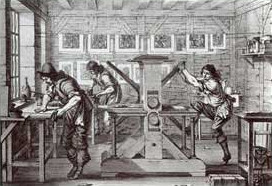The Original Graphic Artwork
 Along with painting, drawing and sculpture, printmaking is considered worldwide as one of the most important expressions of the arts. For its development are used special papers with high cotton content, museum inks that guarantee the permanence of the work and a handmade printing system. The Graphic Work can be made directly by the artist or in collaboration with a master printer under his supervision. After producing a limited amount, the artist signs and numbers each print giving them the character of unique work.
Along with painting, drawing and sculpture, printmaking is considered worldwide as one of the most important expressions of the arts. For its development are used special papers with high cotton content, museum inks that guarantee the permanence of the work and a handmade printing system. The Graphic Work can be made directly by the artist or in collaboration with a master printer under his supervision. After producing a limited amount, the artist signs and numbers each print giving them the character of unique work.
There is a tradition in terms of the numbers of each work to identify where the numbers are written as a fraction to indicate the specific numbers of the work and the total number of the edition. For example: 2/50 (read "two fifty") means that the work is numbered "2" and the issue is 50 works. There are other names that indicate the character of the piece according to their status in the process. The artist can keep a number of works (usually a fraction of the edition) that are called "artist´s proofs" ( P/A in Spanish, E/A "epreuve d´artist" in French, A/P "artist´s proof" in English). There are other denominations for works that are out of the edition and their notations depend on the language chosen, for instance you can find BAT "bon à tirer" , P/C "prueba de color", H/C hors de commerce, P/P "printer proof", P/T "prueba de taller" and many others.
Various techniques exist for creating graphic works, each with its particular appeal. Some of the techniques that we can name are silkscreen, etching, carborundum etching, stone lithography, woodcut, among others.